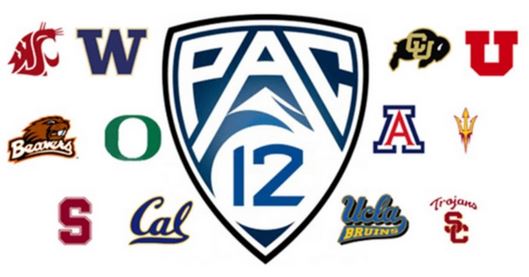Podcast: Play in new window | Download
Subscribe: RSS
Today, the current “Big 5” college football conferences in America are the Atlantic Coast Conference (ACC), Big 12 Conference, Big Ten Conference, Pac-12 Conference, and the Southeastern Conference (SEC).
This group of five major football conferences consists of 64 current members:
ACC 14
Big Ten 14 (Math remediation needed)
Big 12 10 (Another counting problem)
Pac-12 12
SEC 14
Total: 64

Last football season, the Pac-12 Conference consisted of the following teams along with their associated television markets and population:
Arizona:
University of Arizona – Tucson #62 (900,000 potential television viewers)
Arizona State University – Phoenix #14 (3. 8 million)
California:
Stanford – San Jose (#37 TV market with 1.6 million) and San Francisco (#4 at 6.5 million)
University of California – Berkley (#4 San Francisco and #27 Sacramento with 2 million)
UCLA – Los Angeles #2 (12 million)
USC – Los Angeles #2
Colorado:
University of Colorado – Denver-Boulder #18 (2.8 million)
Oregon:
University of Oregon – Portland #21 (2.4 million) and Eugene #145 (340,000)
Oregon State University – Portland #21
Utah:
University of Utah – Salt Lake City #28 (2 million)
Washington:
University of Washington – Seattle/Tacoma #12 (4 million)
Washington State University – Spokane #96 (600,000) and Tri-Cities, WA #175 (250,000)
In recent months, we learned that the Pac-12 Conference will lose Los Angeles (UCLA and USC) to the Big Ten Conference upon the start of the 2024 football season begins.
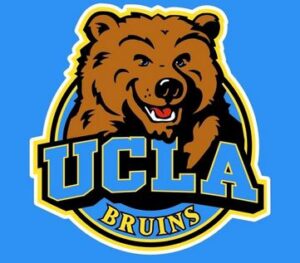
Two teams down. Ten teams remain in the Pac-12 Conference – at least for now.
Losing USC and UCLA was a huge blow to the Pac-12 Conference as it continues to struggle to put together a new television deal for the remaining ten teams.
The #2 ranked Los Angeles market represents nearly 12 million potential television viewers.
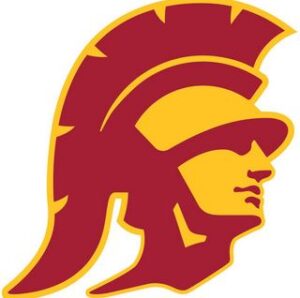
The remaining teams of the Pac-12 (Minus two) Conference will still include about 25 million people. Television markets such as #4 San Francisco, #12 Seattle/Tacoma, #14 Phoenix, and #18 Denver/Boulder will remain for the time being.
However, losing a third of 2022’s television audience is a definitely a crushing blow to the future of the Pac-12 Conference.
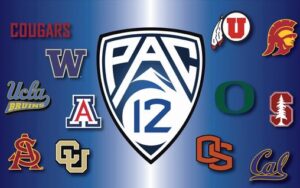
WHICH SCHOOLS COULD BE ADDED TO THE PAC-12 CONFERENCE?
There are a number of possibilities to fill one or both of the spots vacated by USC and UCLA.
San Diego State University (which is the #16 TV market and brings 3 million potential viewers) has their hand-up saying, “Pick me! Pick me!” The Aztecs play sports in the Mountain West Conference and would love to get a chance to move up a notch.
Two other Mountain West schools might be interested in a battlefield promotion.
Boise State University plays in the #92-ranked TV market with 600,000 viewers. The Air Force Academy would deliver Colorado Springs with its #87 television market and 620,000 viewers.
If you want a hot rumor, try this one.
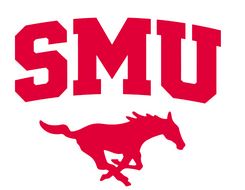
Southern Methodist University (Dallas/Fort Worth – the #5 TV market with 6.4 million potential viewers) would like nothing better than return to a major athletics conference after participating in the American Athletic Conference since 2013.
SMU was booted from the Southwest Conference back in 1987 after being handed the NCAA’s version of the death penalty.

The Mustangs were cited as repeat violators for permitting cash and cars to be openly move into the hands of top athletes at the school. SMU later cooperated with the NCAA and exposed a slush fund for football players financed by a group of the school’s athletic boosters.
As a result, SMU dropped out of football for two years. In 1989, the school resumed football but has not been a national contender in the sport since the 1980’s.
No matter what type of bandage which the Pac-12 Conference wants to apply (by adding a few new members), there will be fewer television viewers in California after USC and UCLA hit the bricks in 2024.
The question today is whether the remaining ten teams are going to stick around to remain a part of a reconstituted Pac-12 Conference. Sadly, the deciding issue for most schools will likely be about the money.

The Big Ten Conference signed a new TV mega-deal in the past year which will send about $70 million annually to each of the 14 current member schools. The SEC’s long-term deal with ABC/ESPN provides a minimum of $20-30 million per year to each of its members.
The Pac-12’s current TV contract ends one year from now. The conference has been attempting to negotiate a new television deal. After losing USC and UCLA, the league is struggling to find a party willing to pay a price high enough to keep the Pac-12 competitive with the other four major conferences.
PACIFIC TIME ZONE DIMINISHES THE VALUE OF A TV DEAL
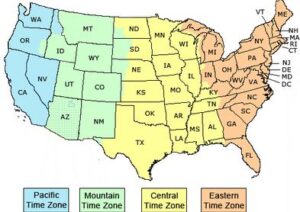
Don’t forget that the Pac-12 teams (other than Colorado and Utah) are located in the Pacific time zone. The Eastern time zone represents a three hour time difference while the Central time zone is two hours behind. Though West Coast fans can rise early and watch college football games as early as 9AM on Saturdays, East and Central time zone fans historically don’t stay up past midnight to watch the late night West Coast finale.
That means that television ratings for Pac-12 games will necessarily have a smaller national audience. A smaller pool of viewers should mean a less attractive TV offer when compared to the other four large conferences to the east.

Indeed, the sharks are circling the waters of the Pac-12 Conference at the moment.
In this never-ending game of college conference chess, the Big Ten and Big 12 Conferences may be dangling an invitation to several of the remaining Pac-12 member schools soon.
It’s no secret that the Big Ten (with its impressive new TV deal) would relish plucking both the University of Oregon and the University of Washington (and their large TV markets) to come along with USC and UCLA.
The Big 12 Conference is rumored to be closing ranks on up to four current Pac-12 schools. Arizona, Arizona State, Colorado, and Utah would be nice geographic fits for the Big 12.
You might remember that the University of Texas and Oklahoma are leaving the Big 12 Conference to join the SEC in 2024.
After OU and Texas bolted for the SEC, the Big 12 Conference quickly responded. It added four new member institutions (in large television markets, of course) beginning with this fall’s 2023 football season. They are:
University of Houston – Houston brings the #6 television market (6 million viewers)
Brigham Young University – Salt Lake City is the #28 television market (2 million)
University of Central Florida – Orlando has the #30 television market (2 million)
University of Cincinnati – Cincy represents the #33 television market (1.9 million)
In 2023 only, the Big 12 Conference will grow from 10 teams to 14. Once Texas and OU leave the conference for the SEC in 2024, the Big 12 will finally have a dozen member schools once again.
UNLESS…
A quartet of Pac-12 teams receives an invitation to join the Big 12 Conference soon.
In the case of the University of Colorado, the Buffs would be returning back to the Big 12 after heading west to join the Pac-12 Conference just twelve years ago. The CU athletics program has floundering since joining the Pac-12 Conference. A return to playing in more familiar environments of the Midwest and southwestern US states could boost the Buffs’ recruiting results.
Long-time Pac-12 members Arizona and Arizona State resemble current Big 12 rivals Kansas and Kansas State. Their heated intrastate rivalry might add a little spice to a Big 12 expansion. These two Arizona schools would likely move to the Big 12 as a package deal.
That leaves Utah.
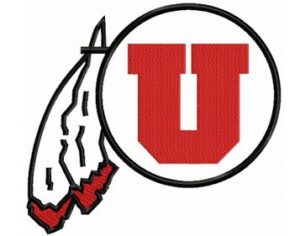
The Utes joined the Pac-12 along with Colorado in 2011. Unlike Colorado, Utah’s football program has been a top ten contender in most years.
After the Big 12 Conference added Utah’s long-time rival Brigham Young beginning this fall, the Utes may or may not be interested in participating in the same conference with an intrastate competitor. Though fans may love seeing the two teams play on a regular basis again, the athletic directors and coaches for the Utes may not feel the same way.
I suspect that Utah will be the least likely team of this quartet to bail on the Pac-12 unless the league implodes on its own soon.
START PACKING?

The fact remains that the landscape in major college athletics continues to shift away from the West Coast.
The Pac-12 Conference was already lagging in producing championship teams in college football. The last West Coast team to win a national championship was USC in 2004.
Though California’s population is large enough to produce plenty of quality college football players, many continue to exit the state to gain more national notoriety elsewhere.
University of Alabama quarterback Bryce Young played high school football in the state of California. However, he won the Heisman Trophy as the quarterback of Coach Nick Saban’s Crimson Tide football team.
The Pac-12 Conference is being destroyed by television economics. Since fewer national television viewers watch West Coast sports, the value of their TV rights is discounted, too.
With higher dollar signs being dangled in front of several current Pac-12 institutions by the Big Ten and Big 12 Conferences, we are witnessing a slow-motion change in the landscape of college athletics. The Pac-12 Conference could become a fond memory within a few years.
As more universities jump ship, the Pac-12 is morphing into the “Pack-Your-Bags!” 12.

